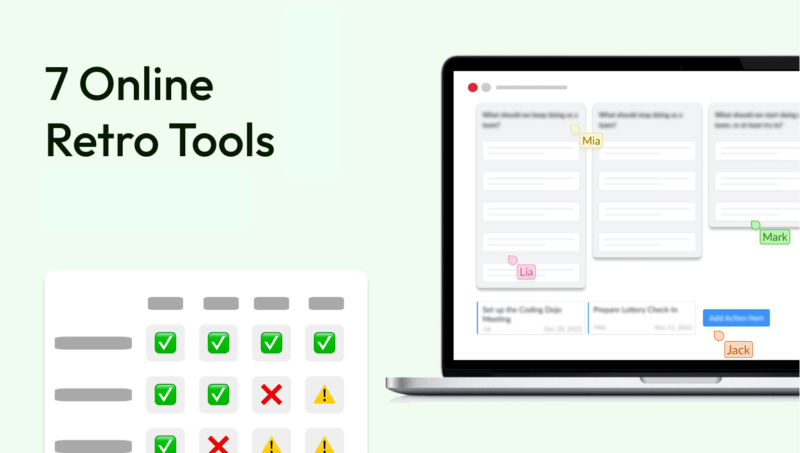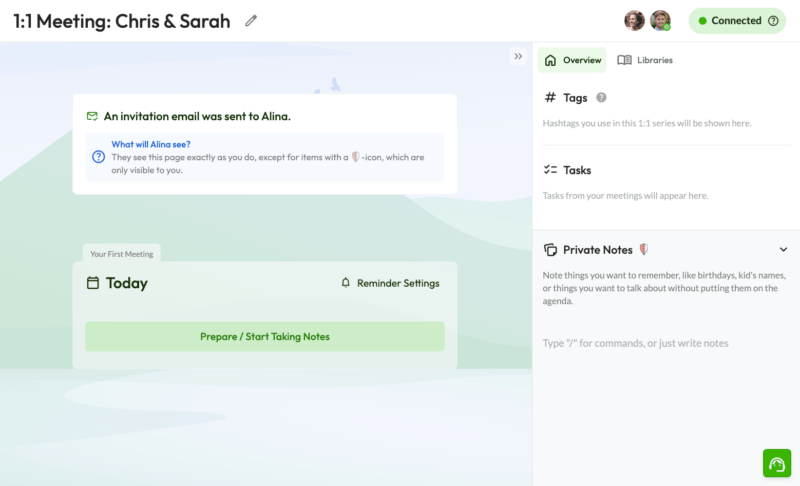As Team Lead or Scrum Master of an agile team, there is no way around retrospectives. They allow you to analyze the last sprint once again and learn from it for the next sprint cycle. In order not to have to reinvent the wheel every time, agile retrospective templates are available for download.
With retro templates, you can prepare an entire retrospective in no time at all, saving yourself tons of time and increasing the consistency and quality of your retrospectives. With the right tool, you can also significantly simplify collaboration on a retrospective.
Agile Retrospective Templates Download
3 Popular Agile Retrospective Templates
Here I would like to show you three popular retrospective templates that fit different situations:
Agile Retrospective Templates Download
1. Keep Stop Start Retrospective Template:
First, I brought a retrospective that fits any occasion. It's short, crisp, and asks the three essential questions to analyze a sprint.
Open Feedback Questions
Keep: What should we keep?
Stop: What should we stop doing?
Start: What should we start doing?
You can also download the Keep-Stop-Start template here. You can paste the downloaded file into a Word document and hold a retrospective there:
Agile Retrospective Templates Download
2. Three Little Pigs Retrospective Template: 🐷
Secondly, I brought an agile retrospective template that plays with an allegory. In this case, imagine you want to protect yourself from the bad wolf from the fable "the three little pigs". There are many retrospectives, where you have to imagine yourself in a certain situation. However, the whole thing is not done just for fun, but thinking oneself into a situation outside of one's field of expertise makes it easier to get at one's thoughts and thus increases the fruitfulness of the retrospective.
Open Feedback Questions
House of straw: What do we do that is just holding together, but could topple over at any moment? 🌱
House of sticks: What do we do that is relatively stable, but could be improved? 🪵
House of bricks: What do we do that is rock solid? 🪨
Agile Retrospective Templates Download
3. Starfish Retrospective Template:
The last one I brought is a somewhat more extensive retro. Instead of the classic three questions, this one has five questions to think about. These additional questions open up new perspectives and make for an even more fruitful retrospective. However, I personally recommend retros with 4 or even 5 questions only to smaller teams, so that you can hold the retrospective in a manageable time frame.
Open questions
Keep: [Optional: Looking at the last sprint / weeks] What should we keep doing, keep as it is?
Stop: What should we stop doing?
Start: What should we start doing?
More: What should we do more of?
Less: What should we do less of?
Of course, we have many more templates up our sleeve. Try them out by testing our tool or have a look at this article: 22 Refreshing Agile Retrospective Templates
Agile Retrospective Templates Download
Tips for good agile retrospectives
Now that I've shown you a few retro templates, I'd like to give you a few tips that will make the process of a retro much easier:
- Choose a suitable retro template: You can decide with the choice of the template in which direction the retro should go. If you want precise feedback with a focus on action items, then the Keep-Stop-Start Retro is a great choice. However, if you want to collect more diverse feedback, then the Starfish Retro with its 5 questions is optimal.
- Prepare the retro early: In the best case, you can start immediately with the retro on the set retro date. For this purpose, it is a good idea to prepare the retro early and send it to the team members so that they can already pre-fill their answers. With tools such as Echometer, preparing and sending advance questions for the retro is a matter of about 2 minutes.
- Stay in time: By analyzing more than 30,000 retrospectives, we have found that retros that tend to be shorter are perceived as more valuable. Set a clear time limit for the retro and use a timer to avoid getting lost in individual discussion points. (More tips from the analysis of 30,000 retrospectives)
- Focus on the important things: You can put the topics of the retrospective, through point voting, grouping or prioritizing, in an order where the most important items are worked through first.
- Record the most important findings: Record the most important points and action items for each team member. Also use deadlines for the action items to create even more clarity.
Agile Retrospective Templates Download
Conclusion
If you want to hold a great retrospective, it's a no-brainer to use an agile retrospective template tool. With it you can prepare retros in no time, always have a clear structure and tasks like asking for answers in advance, recording action items and prioritizing the discussion points are massively facilitated.
If you want to try such a tool once, you can try Echometer with more than 50+ retro templates for free:







